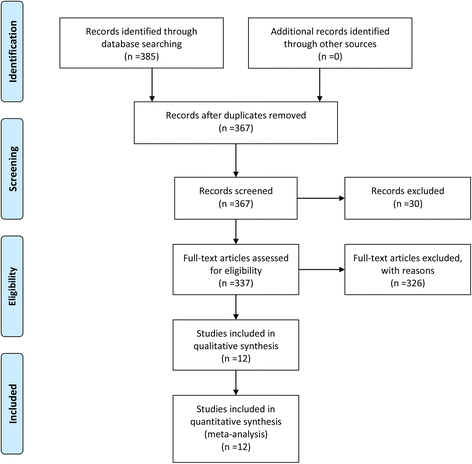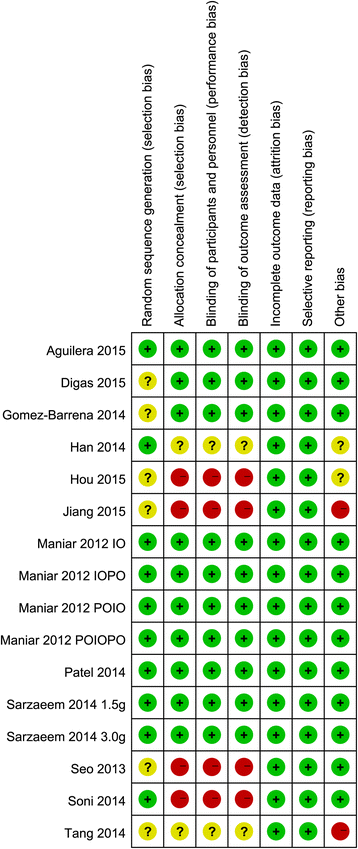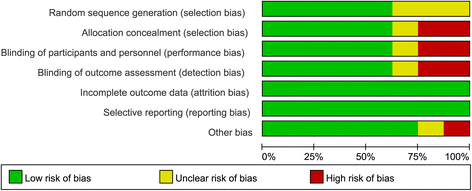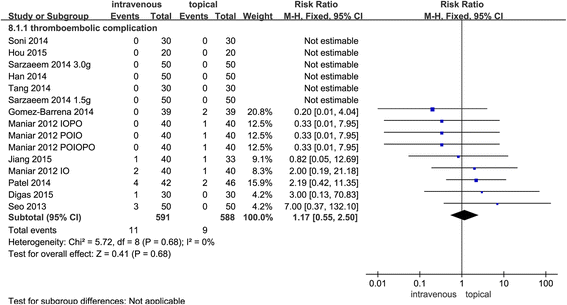Comparison of the effectiveness and safety of topical versus intravenous tranexamic acid in primary total knee arthroplasty: a meta-analysis of randomized controlled trials
- PMID: 28103911
- PMCID: PMC5244538
- DOI: 10.1186/s13018-017-0512-4
Comparison of the effectiveness and safety of topical versus intravenous tranexamic acid in primary total knee arthroplasty: a meta-analysis of randomized controlled trials
Abstract
Background: This study aims to compare the effectiveness and safety of topical versus intravenous tranexamic acid (TXA) in reducing blood loss in primary total knee arthroplasty (TKA).
Methods: PubMed, Embase, the Cochrane Library, Web of Science, Chinese Biomedicine Literature (CBM), Wanfang Database and China National Knowledge Infrastructure (CNKI), and Google Scholar were searched for randomized controlled studies (RCTs) that compared topical versus intravenous TXA in terms of reducing blood loss during TKA from their inception to September 2015. This systematic review and meta-analysis was performed according to PRISMA criteria.
Results: Twelve studies reporting 12 RCTs comprising 1130 patients were included. Compared with the intravenous administration of TXA, the topical administration of TXA showed no significant differences in total blood loss (MD 2.08, 95% CI -68.43 to 72.60, P = 0.95), blood loss in drainage (MD 18.49, 95% CI -40.01 to 76.98, P = 0.54), hidden blood loss (MD 4.75, 95% CI -337.94 to 347.44, P = 0.99), need for transfusion (RR = 0.92, 95% CI 0.67~1.25, P = 0.58), hemoglobin (Hb) decline (MD -0.42, 95% CI -0.89 to 0.05, P = 0.08), and DVT occurrence (RR = 1.17, 95% CI 0.55~2.50, P = 0.68).
Conclusions: Compared with intravenous administration TXA, topical administration TXA exhibits comparable effectiveness and safety in terms of reducing blood loss during TKA. Due to the poor quality of the included studies, more high-quality RCTs are needed to identify the optimal method and dose of TXA after TKA.
Keywords: Meta-analysis; Total knee arthroplasty; Tranexamic acid.
Figures








References
-
- Goodnough LT, Verbrugge D, Marcus RE. The relationship between hematocrit, blood lost, and blood transfused in total knee replacement. Implications for postoperative blood salvage and reinfusion. Am J Knee Surg. 1995;8:83–7. - PubMed
Publication types
MeSH terms
Substances
LinkOut - more resources
Full Text Sources
Other Literature Sources
Medical

